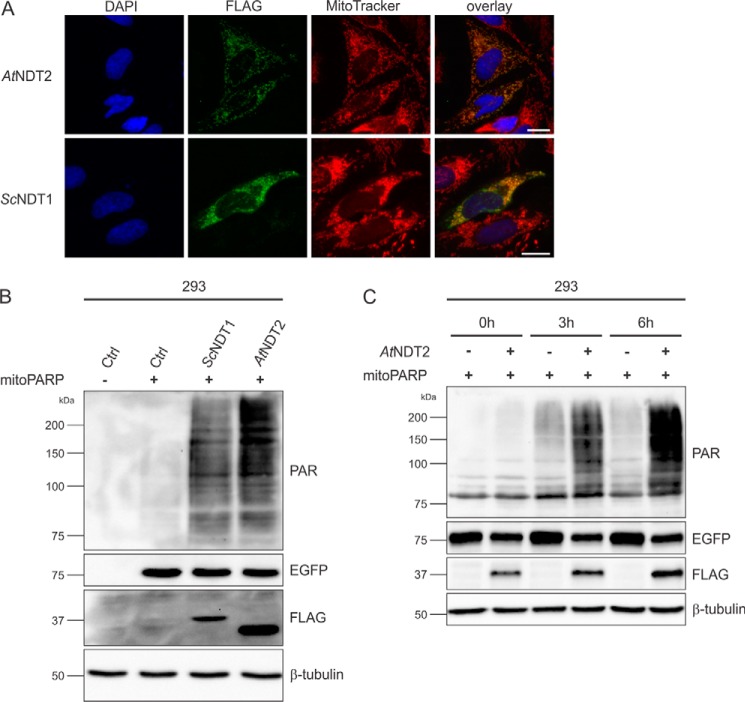FIGURE 1.
Heterologous expression of mitochondrial NAD+ transporters in human cells increases mitochondrial NAD+ availability. A, established mitochondrial NAD+ transporters from A. thaliana (AtNDT2) and S. cerevisiae (ScNDT1) were expressed with a C-terminal FLAG epitope in HeLa S3 cells and detected by FLAG immunocytochemistry. The images show the nuclei (DAPI) and mitochondrial structures (MitoTracker) and the overexpressed proteins (FLAG). The merged images reveal co-localization of the recombinant NAD+ transporters with mitochondria. Scale bar, 10 μm. B, 293 cells were co-transfected with a vector encoding mitoPARP and plasmids encoding the indicated mitochondrial NAD+ transporters or a control plasmid. Cell lysates were subjected to PAR immunoblot analyses. The intensity of the PAR immunoreactivity reflects the mitochondrial NAD+ content. The expression of the transporters (FLAG) and mitoPARP (EGFP) was confirmed, and β-tubulin served as a loading control. C, 293 cells were co-transfected with a vector encoding mitoPARP and either a vector encoding AtNDT2 or a control plasmid in the presence of the PARP inhibitor 3-aminobenzamide (1 mm). 24 h after transfection, PARP inhibition was released by medium exchange. At the indicated time points, cells were lysed and subjected to immunoblot analysis. The intensity of the PAR immunoreactivity reflects the mitochondrial NAD+ content. The expression of the transporter (FLAG) and mitoPARP (EGFP) was confirmed, and β-tubulin served as a loading control. Ctrl, control.

